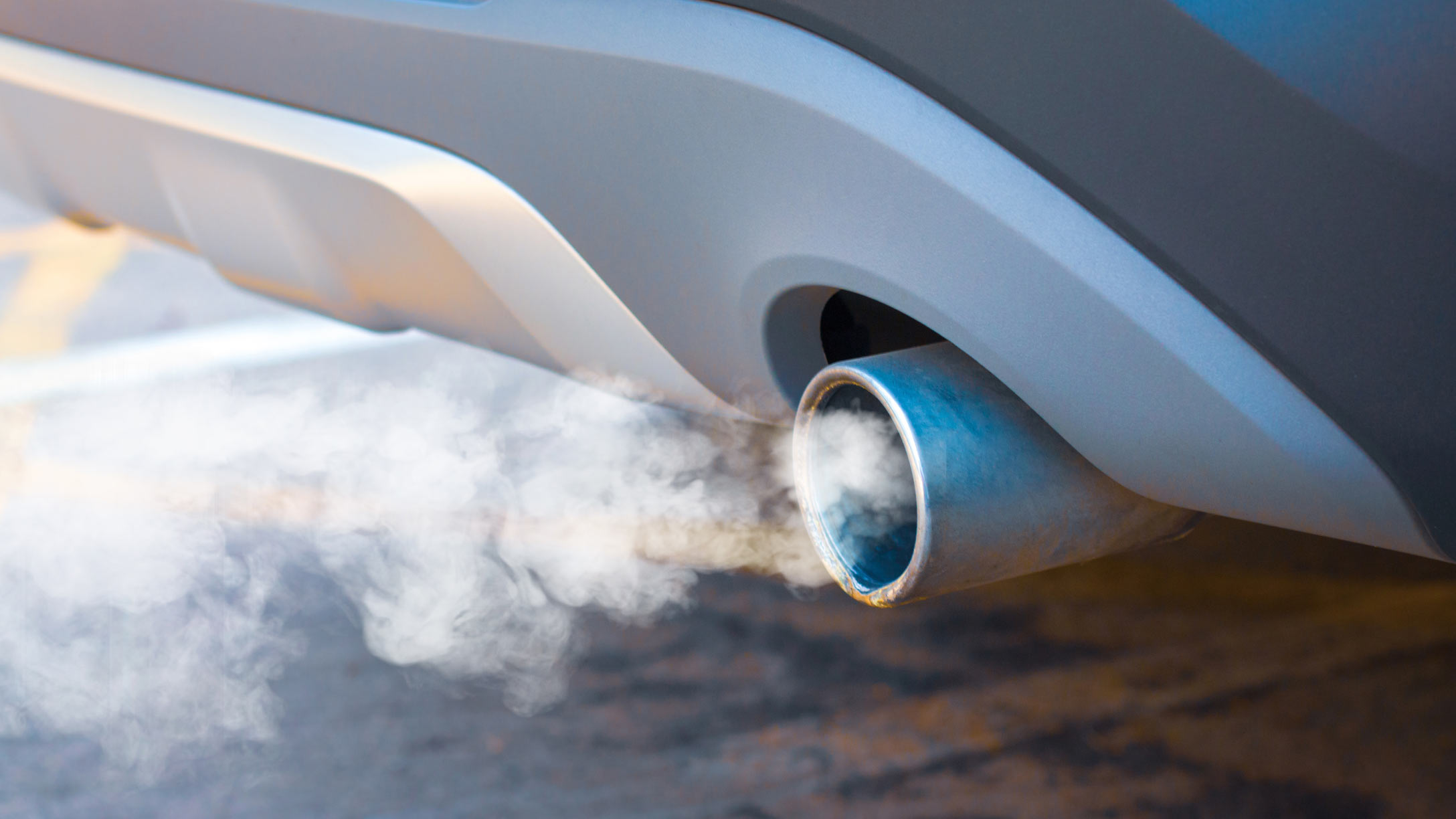Clearing the air: A guide to smog checks for fleet managers
Uncover the importance of smog checks while learning to navigate emissions tests for peak fleet performance and regulatory compliance.


Key Insights
- A smog check is an emissions test that evaluates your vehicle’s environmental performance. Smog is a blend of air pollutants from vehicle exhaust.
- On average, a smog check costs between $20 and $50 per vehicle.
- Most vehicles have to undergo a smog check every two years, but this varies based on factors like location, vehicle type and age.
Maintaining safety and compliance in your fleet is like navigating a dynamic roadmap of evolving regulations and environmental standards. One major checkpoint on this journey is the smog inspection. But what is a smog check? It’s a process that helps you evaluate your vehicles’ emissions to ensure they meet stringent environmental guidelines.
Beyond simply meeting corporate sustainability for fleets, smog checks are crucial in keeping your vehicles road-ready and performing at their best. Delve into the ins and outs of fleet smog inspections to understand how and explore what to expect during an emissions check.
What is a smog check?
A smog check, or smog inspection, is your fleet’s environmental report card. It’s a test on a vehicle’s engine to determine the volume and type of pollutants it emits. The process involves measuring the amount of pollutants released from the exhaust pipe during operation, including periods of fleet idling.
Regular smog checks show your fleet’s engine performance, alerting you to inefficiencies or wear and tear before they escalate into costly repairs. A standard smog check typically evaluates several key emissions, including:
- Carbon monoxide (CO)
- Hydrocarbons (HC)
- Nitrogen oxides (NOx)
- Particulate matter (PM) (in some cases)
While the specific vehicles requiring smog checks can vary by region, generally, gasoline and diesel-powered vehicles — cars, trucks, vans and buses — are included.
California was the first state to implement rigorous California smog check rules in 1966, setting the nationwide standard for vehicle emissions testing. Many states have since adopted similar criteria, and in some cases, vehicles that meet strict emissions standards may be considered California smog-exempt.
What is a smog certificate?
A smog certificate is your fleet’s environmental stamp of approval. It signifies that your fleet vehicle has passed a smog inspection and complies with environmental regulations set by the local government.
After a successful smog check, you can get the smog certificate from the smog inspection station and can often submit it directly to your state’s motor vehicle registration and driver's license administrator.
The process to obtain a smog certificate for your fleet in the United States may vary based on your location. For instance, if you live in California, you need to find a DMV-authorized smog check station near you or visit the Bureau of Automotive Repair. If you receive a DMV registration renewal notice requiring a smog check at a STAR station, you can locate your nearest station on the Bureau of Automotive Repair website.
Compliance with regulations is crucial to avoid penalties, so follow the guidelines provided by authoritative sources.
How much is a smog check?
A smog check typically costs between $20 and $50 per vehicle, though prices vary by location and vehicle type. Additional tests or minor repairs may incur extra fees. To get a better idea, you should confirm pricing with your local inspection station.
This small investment helps catch engine issues early, ensuring efficient performance, minimizing costly repairs and keeping your fleet compliant with environmental standards.
What to expect during a smog inspection
During a smog test, a certified technician will inspect each vehicle in your fleet to determine if they meet the required emission standards.
Three part smog inspection process
The smog inspection is typically a three-part process that includes the following:
- Visual Inspection: A certified technician will start with a visual smog inspection of the emission control components and systems. The technician will check the catalytic converter, fuel cap and exhaust gas recirculation valve (EGR). They’ll also be on the lookout for any visible smoke emitted from the exhaust pipe.
- Functional inspection: The smog inspection then moves onto the vehicle's onboard diagnostic (OBD) system. This system tracks the performance of emission-related components and can provide valuable data about the vehicle's health. To access the data, the technician will connect an OBD scanner to the vehicle's system.
- Emission measurement: The final step involves measuring the vehicle’s actual emissions. For gasoline-powered vehicles, the technician will use a dynamometer (a sort of treadmill for cars) along with an exhaust gas analyzer. Diesel vehicles, on the other hand, are usually subjected to a smoke opacity test to assess their particulate matter emissions.
How long do smog checks take?
Smog checks typically take 20-30 minutes per vehicle, though this can vary depending on the vehicle type and condition. Understanding this process can help you better prepare your fleet for smog checks, creating a smoother, more efficient smog inspection experience.
Smog check exemptions
Smog check exemptions vary by state. For example, while most vehicles in California require a smog test every two years, exemptions depend on the type of vehicle, its model year and the registration area.
Your vehicle is California smog-exempt if it meets any of the following criteria:
- Gasoline-powered (1975 & Older): Includes motorcycles and trailers
- Diesel-powered: 1997 or older, or any diesel vehicle with a gross weight over 14,000 lbs
- Natural gas: Vehicles weighing more than 14,000 lbs
- Electric vehicles: All-electric vehicles, but be mindful of other regulations for electric fleets
- Newer gasoline vehicles: Less than eight model years old
You should also check if your trucks qualify under programs like the California Clean Truck Check program, which may offer additional exemptions or incentives. To ensure your fleet complies with local regulations, refer to your state’s motor vehicle registration and driver’s license administrator’s website for current requirements.
How to pass a smog check
Just like you should prepare for DOT inspection audits, make sure your fleet vehicles are properly maintained. Here are some tried and tested ways that can increase the likelihood of passing a smog check:
- Routine maintenance: Follow a regular service schedule and address issues immediately. You can also consider predictive maintenance.
- Resolve warning lights: Fix any check engine or emissions-related alerts before the test.
- Warm up the engine: Drive for at least 20 minutes to ensure the engine reaches optimal temperature.
- Secure the gas cap: A properly tightened cap can prevent unnecessary emissions errors.
- Run a pre-test diagnostic: Scan your vehicle for issues to fix potential problems in advance.
- Replace filters: Change air and fuel filters regularly for optimal combustion.
- Clean the engine: Remove carbon buildup and debris for improved performance.
- Drive consistently: Regular driving before the test helps stabilize sensor readings and clear codes.
Before the smog test, get a vehicle inspection at a licensed facility to confirm all parts are working properly. Using a reliable AI fleet management solution like MyGeotab can also make this process more efficient as it helps keep track of maintenance schedules and repairs, contributing to the overall health of your vehicles.
What if your fleet vehicle fails the smog check?
Harsh reality: Not every vehicle passes the smog check on the first attempt.
Excessive tailpipe emissions are the most common reason for smog check failure, but less obvious issues can also be involved, like a malfunctioning oxygen sensor, leaks in the exhaust system or a faulty catalytic converter. Fleet maintenance solutions can help avoid these potential issues.
If a vehicle in your fleet doesn’t pass the smog check, take it to a certified repair shop and have the issue diagnosed. Once the necessary repairs are made, you can retake the test.
How long is a smog check good for?
In most regions, a smog check is typically valid for two years. However, if a vehicle changes ownership, a new smog check is usually required—though in California, for example, the California smog check certification is valid for 90 days after a sale.
When the smog check expires, you’ll need to retake the test, especially if you’re renewing your vehicle’s registration or planning to sell it. Using fleet management software that helps track your fleet’s productivity and operations can help you stay ahead of these deadlines and avoid costly delays.
Prioritizing smog checks for efficient fleet management
As a fleet manager, you’re not just overseeing vehicles — you’re managing a significant portion of your organization’s resources. Smog checks might seem like an environmental duty at first, but they are intricately linked with your fleet’s operational efficiency and financial health.
Understanding the smog inspection process, its frequency and what to do when a vehicle fails a smog check can help minimize downtime and avoid unnecessary expenses. Regular smog checks also ensure that your fleet is performing at its peak, which can save you from pricey repairs and boost the lifespan of your vehicles.
And remember, you don’t have to navigate this alone — we are here to help. We have helped fleets pull telematics data directly from the vehicle, avoiding unnecessary downtime and the $50 testing fee. Explore our fleet compliance software and how it can help you achieve a sustainable fleet.
Subscribe to get industry tips and insights
Frequently Asked Questions
Smog is a harmful blend of air pollutants — primarily from vehicle emissions and industrial activities — that significantly degrades air quality.
It typically contains ozone, nitrogen oxides, particulate matter and volatile organic compounds that react with sunlight, posing serious health risks, such as respiratory and cardiovascular issues.
You’ll need your vehicle, registration documents and a warmed-up engine with no active warning lights.
Smog checks are available at authorized inspection stations. For specific details, check your state’s motor vehicle registration and driver's license administrator’s website.
California smog test failures often occur due to:
- Emissions issues can stem from worn or faulty hoses, loose seals or simply the natural wear and tear of an older vehicle, all of which can increase the levels of pollutants emitted.
- A lit check engine light: An active check engine light signals underlying engine or sensor problems that may affect emission readings.
- A loose gas cap: A gas cap that isn’t properly secured can cause fuel vapor leaks, leading to a smog test failure.
A California smog check includes an emissions test, a visual inspection of components and a review of the vehicle’s overall readiness.
In California, a smog check typically costs between $30 and $70, depending on the station and vehicle type.
Table of Contents
Subscribe to get industry tips and insights
Related posts

Field service is losing money to bad data: Go beyond GPS with smarter telematics
June 27, 2025
3 minute read


Enhancing winter road maintenance with postseason materials usage analyses
June 20, 2025
6 minute read

The fleet safety incentive program checklist for driver engagement that lasts
June 19, 2025
2 minute read

Beat the Heat: Easy Ways to Maximize Your EV Range This Summer
June 19, 2025
2 minute read

Building a self-sustaining school bus driver safety program with Geotab Vitality
June 13, 2025
7 minute read